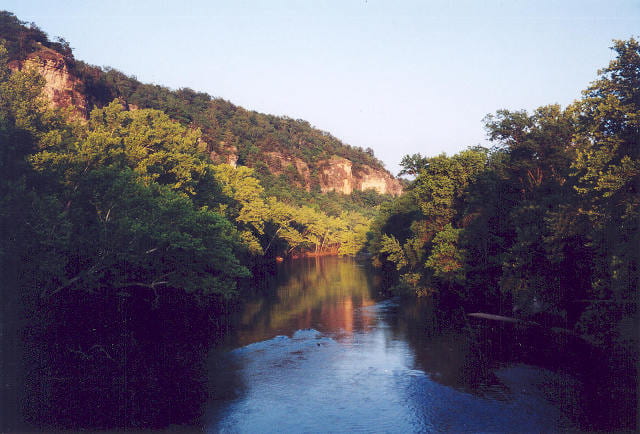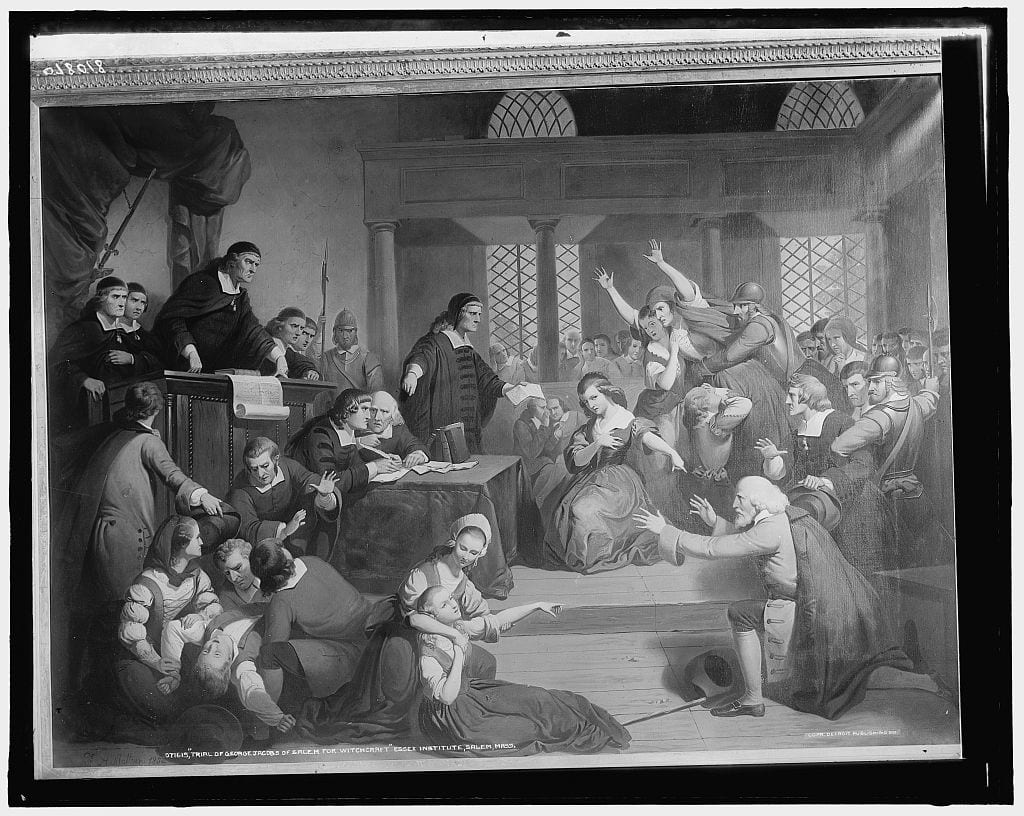While most of the late seventeenth and eighteenth century was relatively quiet regarding witchcraft, dark magic, and Devil worshiping, accusations of witchcraft would once again appear in the Ozark region of Missouri and Arkansas during the late nineteenth and early twentieth centuries. The geography of the Ozark region could best be described as rolling hills, heavily forested, and composed of remote agricultural communities that were largely self-sufficient. The Ozarks were originally colonized by the French but eventually, British squatters, poor farmers, and adventurers would make their way into the region even though it was illegal for British citizens to settle west of the Appalachian Mountains.
Tag: Witchcraft
Wide-reaching witch hunts are like fires; they rarely occur spontaneously, are in need of previously established fuel, are started through an initial spark, and are sustained by adding more fuel for it to consume. While these accused witches were hanged or pressed rather than burned, when discussing the Salem witch trials building a fire is an apt metaphor with each stage corresponding to the societal conditions at Salem.
Before Europeans established colonies in America, magical practices and traditions were an essential part of European life. People who practiced magic, often referred to as “cunning folk” or “wise folk,” were respected and valued by their communities. They were experts in the arts of healing and divining and were often the first people their neighbors would turn to in times of hardship. Magic was so much a part of daily life that people would practice it in their own homes, especially given that many magical rituals did not require any training. Magic was used to heal the sick, protect people and their families from harm intended towards them by others with whom they had disagreements; protect their livestock and economic stability from natural and deliberate causes; and to ease daily difficulties such as aiding in finding lost belongings.

Salem Witch Trial Scene – (Original Caption) Salem Witch Trial. Accusation of bedeviled girl. After an engraving by Howard Pyle.
The supernatural, magic, and witchcraft persisted to be a part of the United States belief system as a result of a sincere, generational fear of the unknown. In American history, early modern European migrants and New England Puritans feared anything paranormal, and most importantly, witches that could harm their families. There were many factors involved which led to the accusations of witchcraft in Puritan society. Some of the biggest reasons for why accusations ravaged Salem included fear, the belief in both good and bad witchcraft, the willingness of physicians to utilize witchcraft as a form of medical diagnosis, politics, and potential ergot poisoning. Sadly, for those accused of witchcraft in Salem, the factionalism of both the Town and Village provided the ideal conditions for what is most widely regarded as the greatest witch-hunt in American history.
Colonists used the belief of witchcraft to grapple with psychological tensions and concerns that had developed out of trying to make sense of their new external worlds, ultimately embedding witchcraft into the cultural belief system of the United States. In England, the Church suppressed any voice or power women may have had by limiting their societal roles. On the other hand, the Puritans believed that men and women were “equal” in the eyes of God. When arriving to the new settlements, Colonists needed to rely on both men and women to do their designated roles faithfully. This was to ensure the success and stability of their communities. Accusations of women practicing witchcraft in New England came about because the strict moral doctrine that Puritans adhered to created gendered societal roles and fear concerning the inability to attain salvation.

Woodcut of witches flying
In the early modern Atlantic World, witchcraft was woven into the fabric of cultural beliefs, traditions, and behaviors. At the core of the witch-trials was the prominent belief that the physical, material world intertwined with that of the spiritual. This belief in divine and evil intervention in the material world played an integral role in the harm associated with witchcraft. People used this intervention to explain the unexplainable: sickness, environmental phenomenon, and unusual beliefs or rituals deemed heretical.
© 2025 Crisis and Catharsis
Theme by Anders Noren — Up ↑



